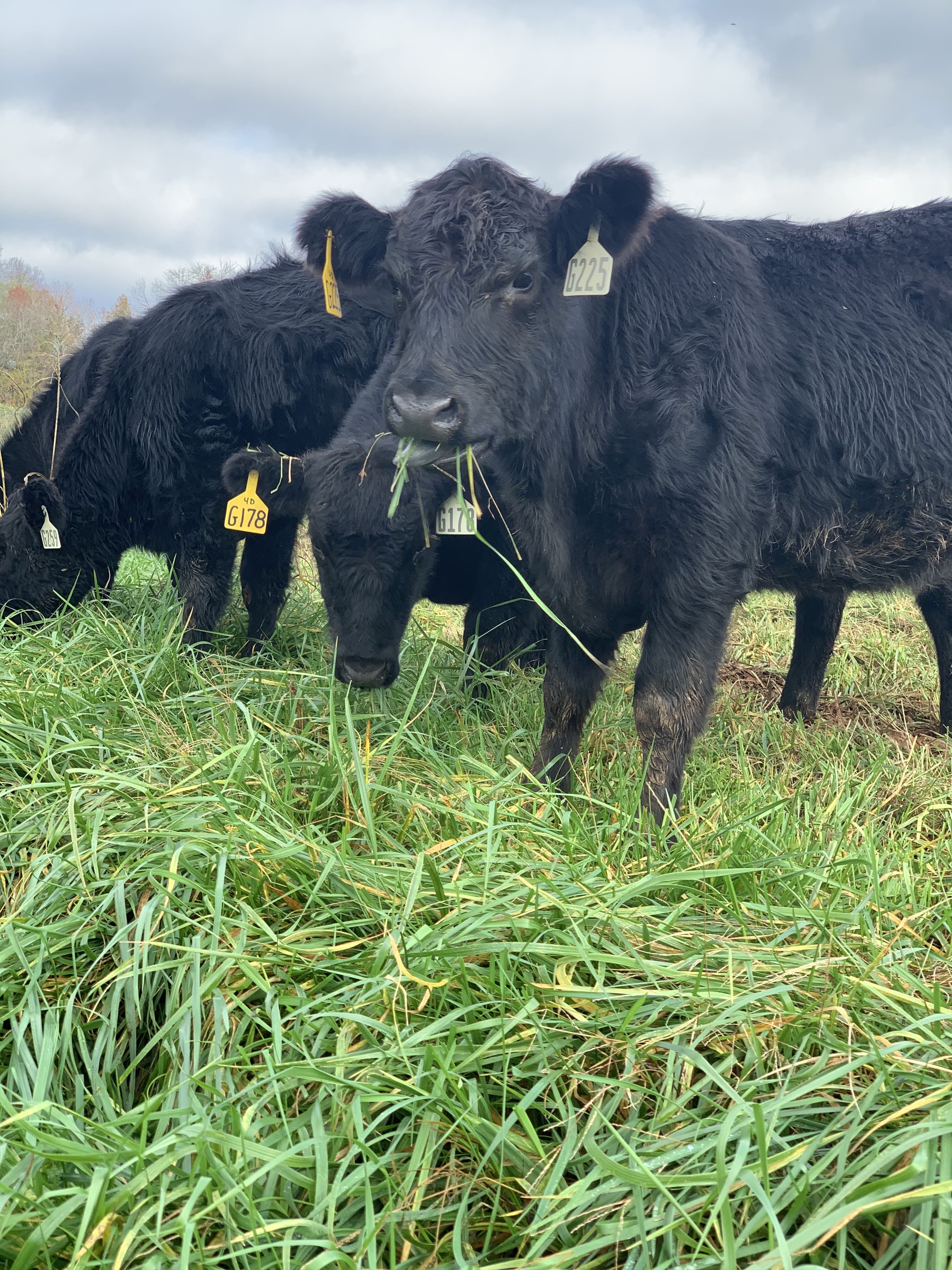November Livestock and Forage Tips
go.ncsu.edu/readext?1102200
en Español / em Português
El inglés es el idioma de control de esta página. En la medida en que haya algún conflicto entre la traducción al inglés y la traducción, el inglés prevalece.
Al hacer clic en el enlace de traducción se activa un servicio de traducción gratuito para convertir la página al español. Al igual que con cualquier traducción por Internet, la conversión no es sensible al contexto y puede que no traduzca el texto en su significado original. NC State Extension no garantiza la exactitud del texto traducido. Por favor, tenga en cuenta que algunas aplicaciones y/o servicios pueden no funcionar como se espera cuando se traducen.
Português
Inglês é o idioma de controle desta página. Na medida que haja algum conflito entre o texto original em Inglês e a tradução, o Inglês prevalece.
Ao clicar no link de tradução, um serviço gratuito de tradução será ativado para converter a página para o Português. Como em qualquer tradução pela internet, a conversão não é sensivel ao contexto e pode não ocorrer a tradução para o significado orginal. O serviço de Extensão da Carolina do Norte (NC State Extension) não garante a exatidão do texto traduzido. Por favor, observe que algumas funções ou serviços podem não funcionar como esperado após a tradução.
English
English is the controlling language of this page. To the extent there is any conflict between the English text and the translation, English controls.
Clicking on the translation link activates a free translation service to convert the page to Spanish. As with any Internet translation, the conversion is not context-sensitive and may not translate the text to its original meaning. NC State Extension does not guarantee the accuracy of the translated text. Please note that some applications and/or services may not function as expected when translated.
Collapse ▲Forage Tips
- Don’t overgraze your forages! Keep your forage height at 4″ to allow the plants adequate nutrition for re-growth in the spring.
- Monitor body condition scores (let me know if you need help with this).
- We have seen a lot of foxtail in pastures due to our unusually wet conditions the early part of summer. Think about applying a pre-emergent herbicide (such as pendimethalin) in early spring to reduce the germination of the warm-season annuals. Common brand names include Prowl and Satellite HydroCap. READ the label. This is for established pastures, and these will kill crabgrass, clover, as well as the foxtail.
- Plan to apply Nitrogen in early spring to give your desirable forages a boost.
- If you have your weeds under control, don’t plan to spray herbicides, then be looking for some good red or ladino clover that you can frost seed into your pastures to add diversity, increase your forage nutritive value, and to decrease the need to apply Nitrogen fertilizer. You can have too much of a good thing, though. Typically, we recommend less than 20% of your pasture as clover. Learn more at https://grasslandrenewal.org/2025/10/14/frost-seeding-of-clovers/.
- If your hay inventory is short, try to purchase hay now to ensure the best quality. Consider using https://nchayfinder.com.
Cattle Tips
- Ensure fall calving cows have enough nutrition. Supplement as needed.
- Email awbowman@ncsu.edu or call 336-593-8179 to reserve the County Cattle Chute for the dates you plan to vaccinate, process calves, do breeding soundness exams, etc.
- Castrate and dehorn calves as soon as possible to minimize stress.
- Vaccinate calves 21-90 days before selling with two rounds of vaccines with at least 21 days between vaccines. Click here for a suggested vaccine program.
- Vaccinate replacement heifers two months before breeding, and a booster one month before.
- Vaccinate cows a month before re-breeding (or when your vet. recommends)
- Schedule breeding soundness exams (BSE) for your bull prior to turn-out
- Ensure calves have adequate shelter and wind-breaks for bad weather.
Sheep/Goat Tips
- Our shorter days means that it’s peak fertility for our sheep and goats. Ewes have an average cycle length of 17 days, with most being between 14 and 20 days, while does have an estrus cycle of 18 to 22 days, and they display estrus for 24 to 48 hours. The gestation period ranges between 144 and 152 days. If you haven’t turned your ram/buck in, it’s not too late.
- Consider “flushing” your herd/flock by supplementing with a high energy diet such as ¾ to 1 pound of whole corn/head/day. Flushing should commence three to four weeks before breeding and continue through one estrous cycle. Flushing increases the ovulation and lambing rate and decreases the early embryonic mortality. Producers should only flush lean animals to avoid overfeeding.
For more information, contact April Bowman, Livestock Extension Agent at 336-593-8179 or awbowman@ncsu.edu.





